“Monica” Written and illustrated by Daniel Clowes. Fantagraphics. $30.00. October 2023. 106 pages. Adult.
Thanks to Fables Books, 215 South Main Street in downtown Goshen, Indiana, for providing Commons Comics with books to review.

Check Fables out online at www.fablesbooks.com, order over the phone at 574-534-1984, or email them at fablesbooks@gmail.com.
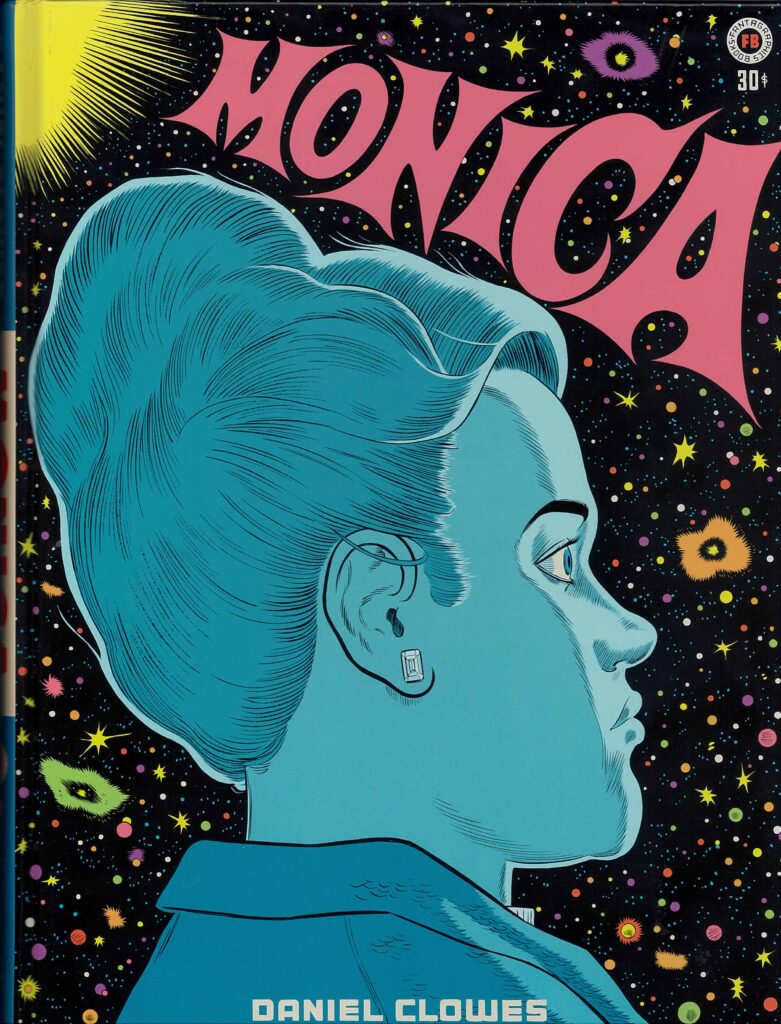
A new book by Dan Clowes is always an event. A veteran indie comics artist, Clowes writes, draws, letters, and colors all of his own work by hand, a time-consuming and increasingly rare creative process in this age of digital tools. “Monica” showcases that mastery, especially in illustrating his characters’ faces, where miniscule shifts betray complex emotional storms:
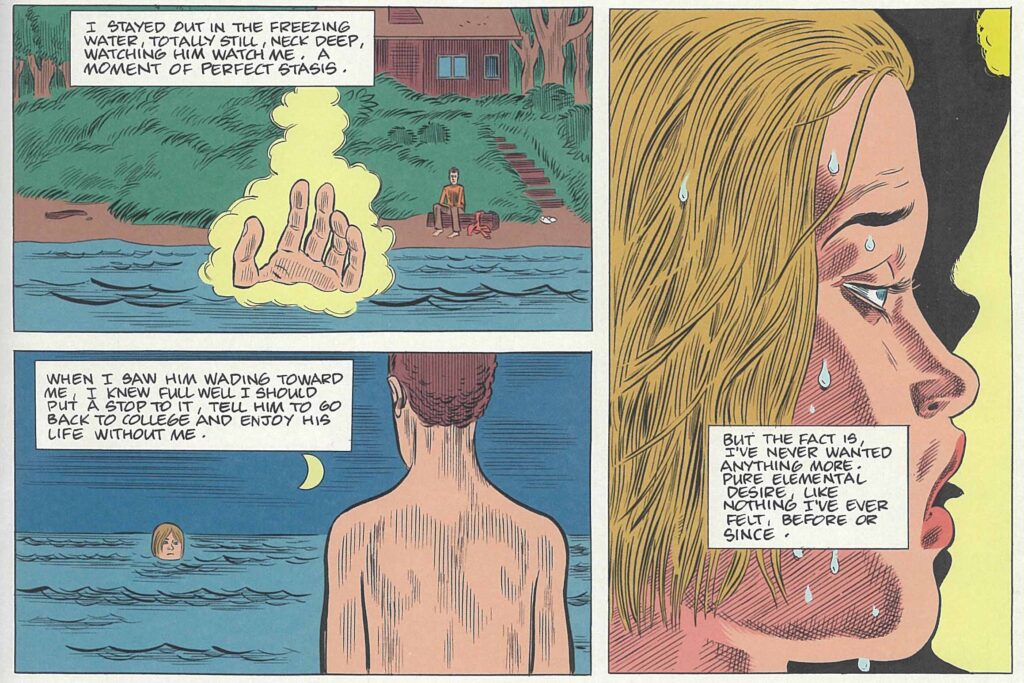
My blog’s homepage has been graced since its inception by an image of Enid Coleslaw, from “Ghost World,” the most beloved of Clowes’s “Eightball” comic book series. It’s about time that I review one of his books.
Nevertheless, writing this post is a tricky endeavor. As Clowes told KQED in the fall of 2023, just before the official release of “Monica,” his favorite readers are the ones who “approach [his new work] with fresh eyes.” “I know when it comes out,” he adds, “some blowhard is going to have theories about it.”
I’ve spent some time with this book—a must with any full-length work by Clowes—so I do have theories. At the risk of being a blowhard, however, rather than try to “solve” the book for you, I’ll highlight a few things to look for as you read. Nevertheless, if you have a low tolerance for spoilers, you might want to stop reading here—but do get back to me when you’ve finished the book. “Monica” is one of those rich literary masterpieces capable of supporting a lifetime of meaty conversations and analysis, and I’d love to hear your take on it.
Still with me? Here’s a quick plot synopsis: Monica, whose mother Penny abandoned her to live with her grandparents at age six, embarks as an adult on a quest for answers about her life. Monica strives to piece together the gaps in Penny’s history: What were her reasons for leaving Monica? Which of Penny’s many boyfriends and flings was Monica’s father? Finally, what do Monica’s revelations about her mother and her life say about her own identity?
Sounds like a pretty straightforward journey of discovery, but Clowes has never been one to settle for “pretty straightforward” anything in his comics. Monica’s life is introduced by a title page depicting stages in the tumultuous sprawl of planetary and human history:

To add one more layer of complication, the chronological chapters in which Monica shares her life journey are interspersed with tributes to old-school pulp comics stories in genres like war, horror, and hard-boiled detective. Here’s the opening page, for example, of Clowes’s paean to EC Comics-era horror comics:
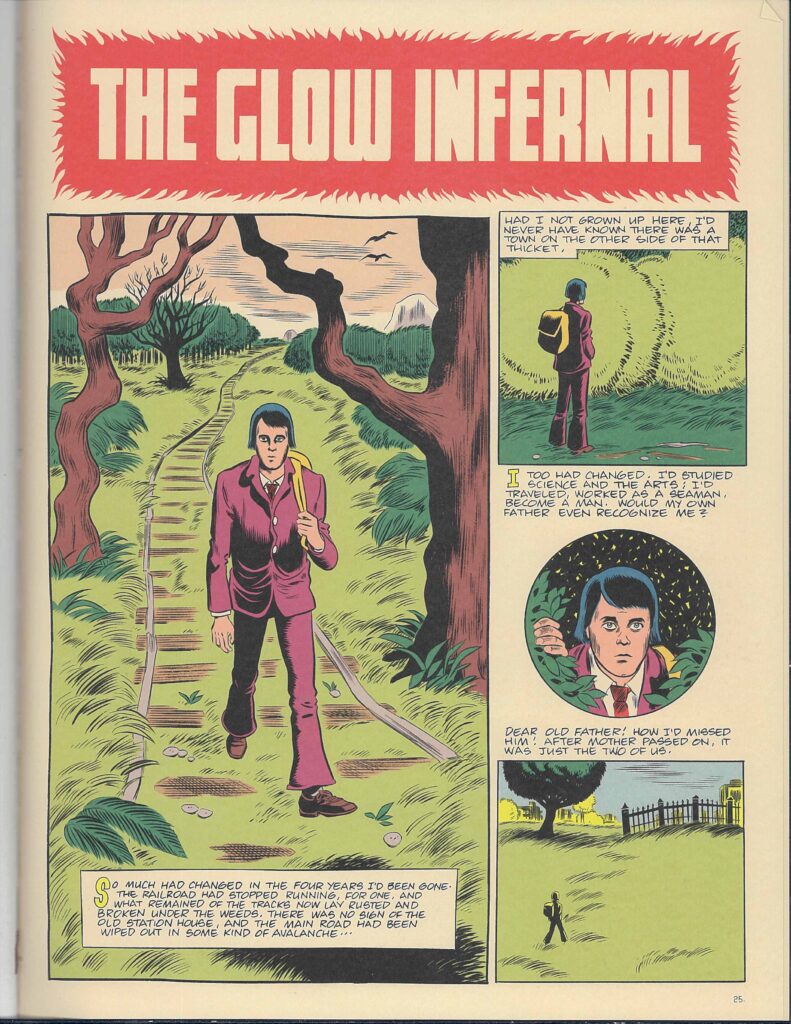
Each of these interlude chapters is illustrated on a light brown background, as if the pages have become brittle and darkened from decades spent in an old attic box. Yet with Clowes’s use of color and appropriately overwrought drama, the effect of these interspersed stories is kaleidoscopic rather than crusty and outdated.
One of the most brilliant—and funny—facets of “Monica” is its self-referentiality. Clowes has been known to put himself into his own stories with self-deprecating and unflattering cameos. In this panel from “Ghost World,” for example, Enid is excited to meet her favorite comics artist. Unsurprisingly, he falls far short of the idealized version of him she’s been carrying around in her head:

Clowes fans accustomed to seeing boring self-portraits like this one might be surprised to learn that his early years were almost as dramatic as Monica’s. Like Monica, Clowes’s parents were mostly out of the picture, and he was raised by his grandparents from a young age. Although his divorced mother and father were still nearby, he always felt distant from them, well aware that he was never getting the full story of his family history.
So, as he was working on “Monica,” he hit the newspaper archives. He had known that his father was a race-car engineer and his mother a mechanic, but he didn’t discover until his research that his mom left his dad for a race-car driver who drove a car that Clowes’s father designed. The driver—his stepfather—later died in a crash, which Clowes notes as the beginning of the mental decline that spurred his mother to leave his six-year-old self with his grandparents for good.
This chaotic childhood is only one of many parallels between Clowes and Monica, which makes the appearance of another even more literal self-representation toward the end of the book particularly brilliant and amusing. Keep an eye out for Monica’s new friend “Stan”—who looks almost exactly like current-day Dan—and for the weird philosophical vortex created by Monica and Stan, different facets of Clowes’s identity, getting to know each other. “I’m sure we’ve been in the same room before,” Stan says to Monica at one point. “Isn’t that weird to think about?” This “Stan” doesn’t give off fanboy stalker vibes a la the Eminem song, but Clowes is clearly enjoying playing around with the imitation and doubling implied by the slang term.
Clowes also showcases his mastery by aging his characters— in Monica’s case, from infancy to her “golden years.” When readers first meet Monica, she’s in a baby carriage, as well as, in the bottom right panel, being held by the mother of the “two feral boy-children”:

Monica admits more than once to telling her story different ways to different people, which reminds readers to take her narration with a grain of salt. This simmering tension is classic Clowes: his narrators are rarely honest with themselves, much less with the people they’re telling their story to. Check out the bottom left panel below, for example. “I remember feeling so happy and safe!” reads Monica’s narration, but her expression and posture suggest the opposite:
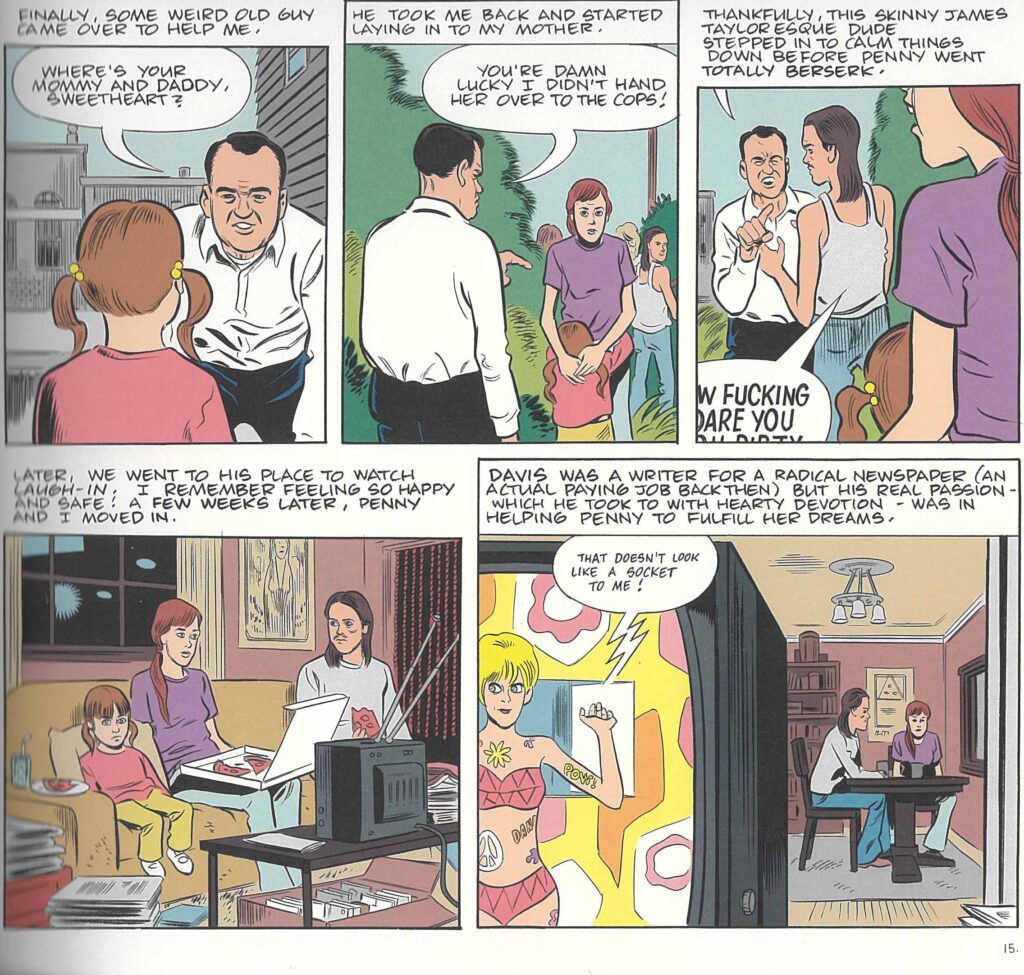
The top right panel shows another Clowes technique to look for: word bubbles partially or fully obscured, sometimes to denote background noise, but more often to show dialogue forgotten, misremembered, or—most intriguing—withheld. Under Clowes’s pen, the literary term “unreliable narrator” takes on an added layer of complexity.
The depth and complication created by these techniques and others places “Monica” on par with the most celebrated literary fiction. After my first read, my brain didn’t want to let go of the book—which is exactly what Clowes was hoping for. “That was my goal, to create a book that you finish and then go back to the beginning,” he told KQED. “Ideally, I’d like everybody to have a different reading of it.”
Which doesn’t mean that “Monica” is an interpretive free-for-all. As much as Clowes resists set answers to the book, he does reward careful readers for noticing. Take a look, for example, at the similar facial structure of these characters from two of the interspersed brown-paper pulp stories, the horror story “The Glow Infernal” and the detective story “The Incident,”
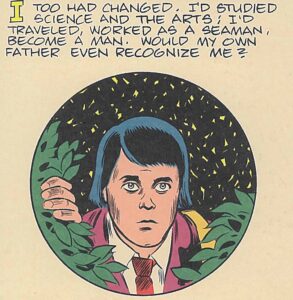
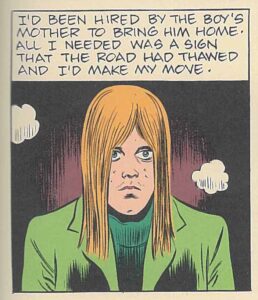
both of whom look an awful lot like how Monica sees herself in the mirror:
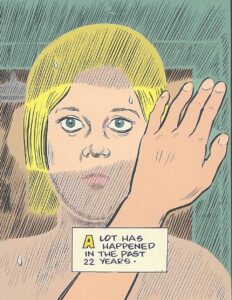
Clowes is too much of a master artist for these twins to be coincidental. At Clowes’s urging, I’ll leave it to you to make your own sense of this and other threads in “Monica,” both visual and verbal. “Monica” stands up to as many reads as you can make the time to give it. Clowes might not be a fan of the term “literary comics”—“That sounds so boring,” he told “The Comics Journal”—but this rich and complex book ranks among the best of them.
